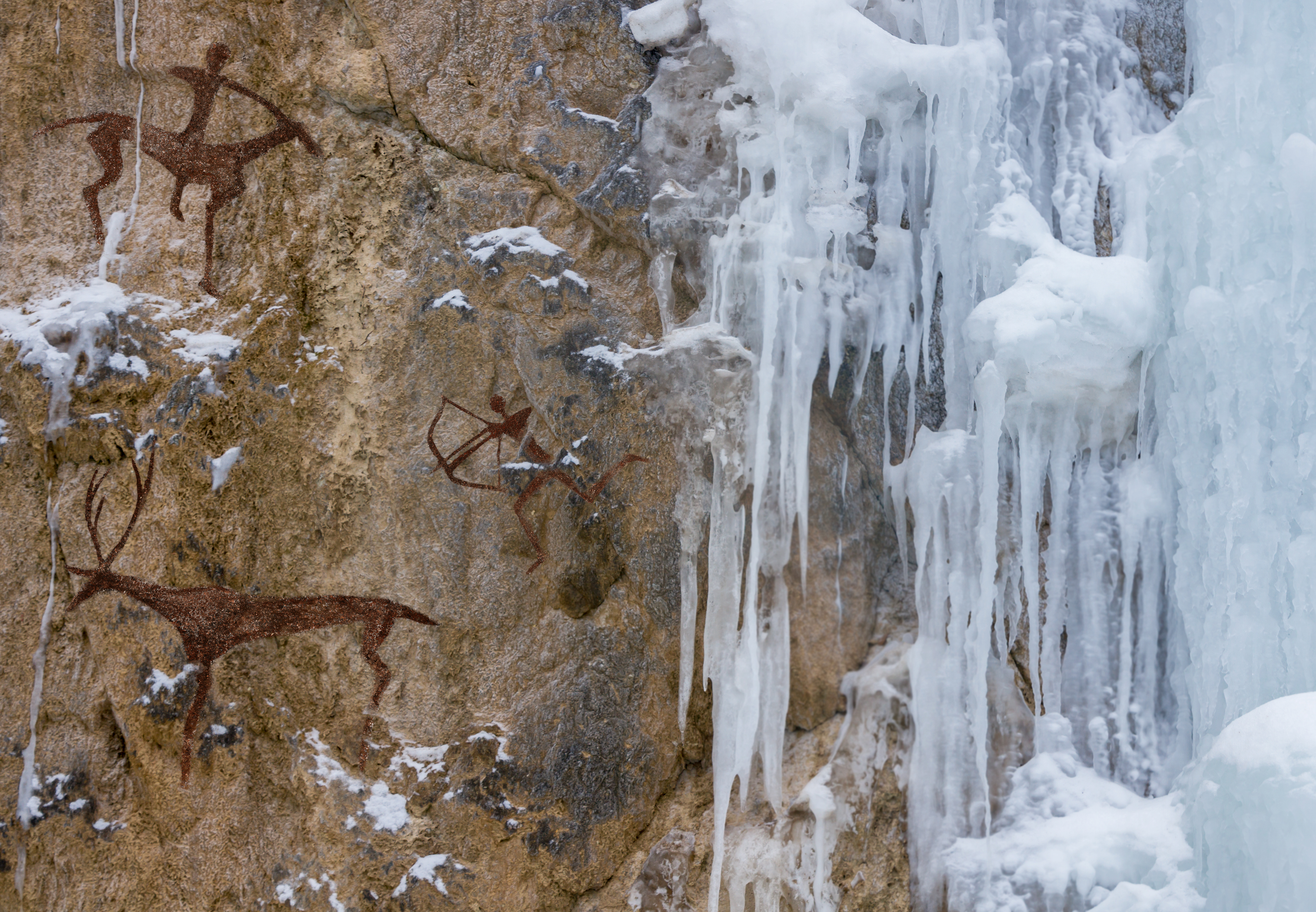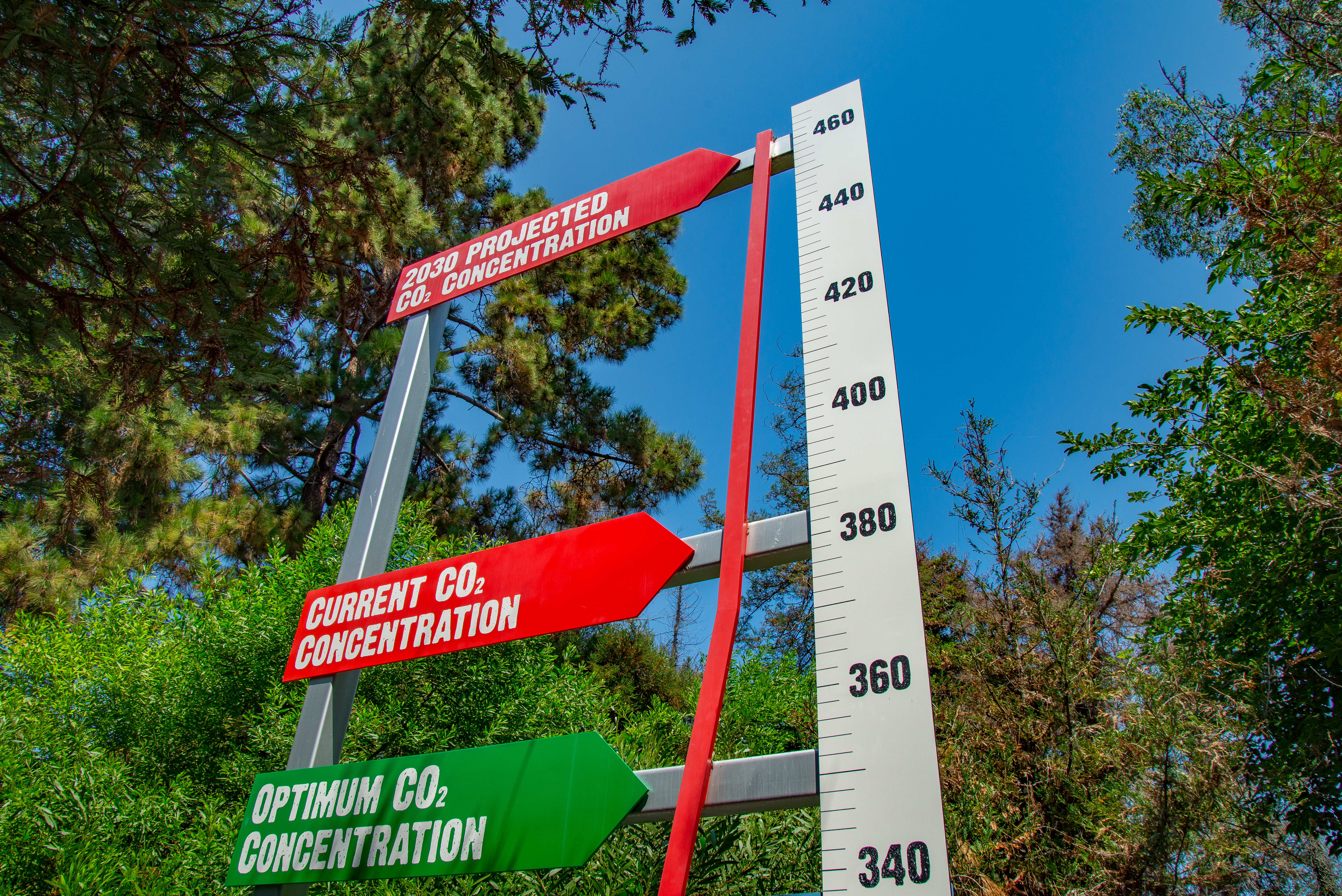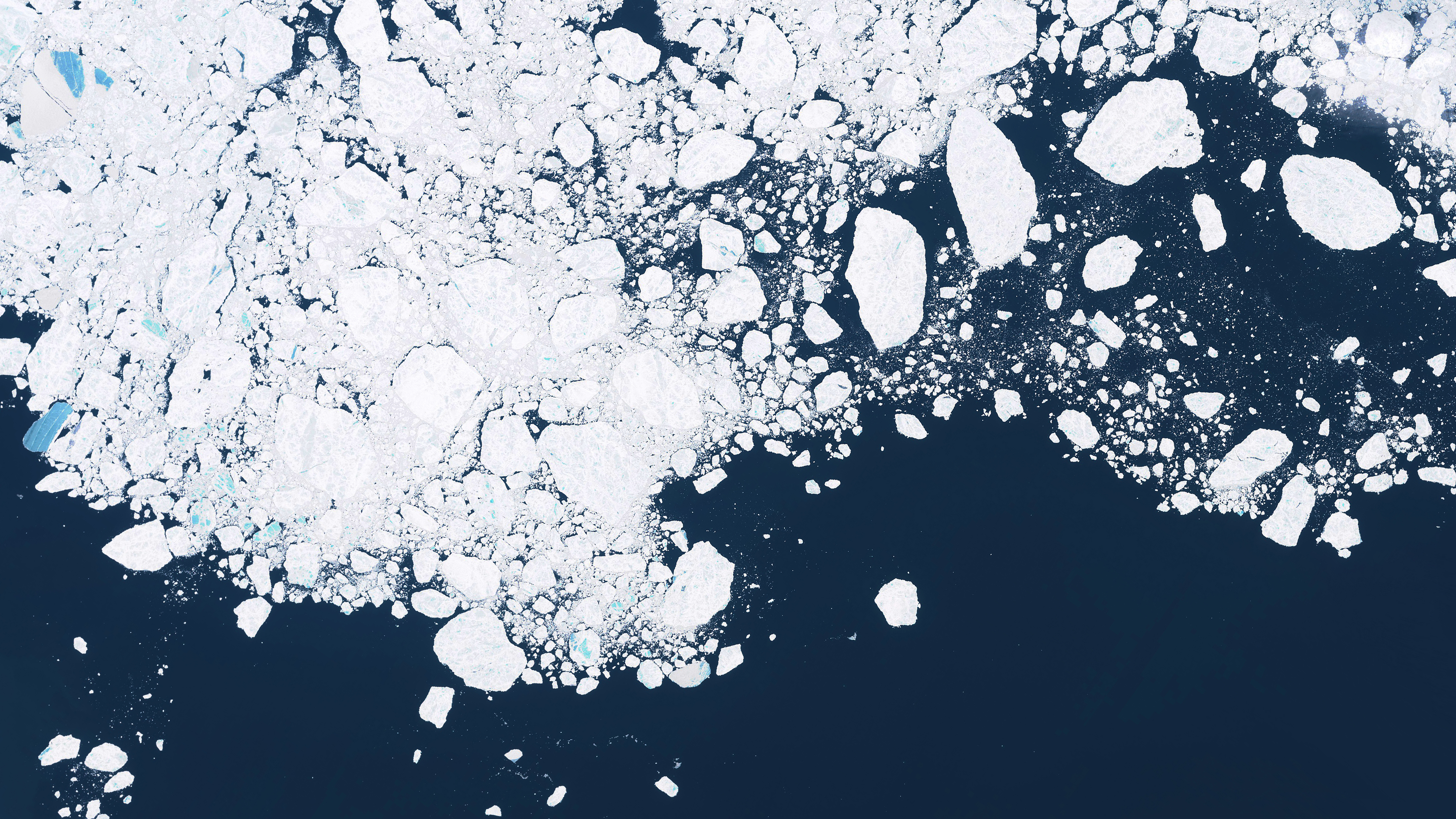The planet's time machine
Deputy Vice-Chancellor (Cornwall) at the University of Exeter
- The Antarctic ice sheet is the planet’s time machine as it holds air samples from previous times. At the bottom of the ice sheet – it’s very thick: over 4,000 metres thick in some places – the age of that ice is somewhere around 800,000 to a million years.
- Currently, we are at 415 parts of CO2 per million, something we have never seen in the ice core record. We are concerned that we are heading to levels that we haven't seen since the Pliocene, between 5 and 2.5 million years ago.
- In the Pliocene, temperatures on this planet were somewhere around three or four degrees warmer than they are right now and the level of the sea was 20 metres higher than it is.
- Through satellite observations, we can be 100% sure that the polar ice sheets are starting to experience the most melting as a consequence of human-induced global warming. If it all melted, sea level globally would go up by about 60 metres.
- The level of CO2 is still rising, and if we don’t reduce our emissions to zero in about 30 years’ time, it’s completely possible for the level of CO2 in the atmosphere to get somewhere near 1,000 parts per million.
The Antarctic time capsule
The reason that we’re keen on learning about the distant past is because our climate is changing, and it’s interesting for us to understand the times in the past when it’s been most similar to the climate we’re heading towards. For the last 170 years or so, the level of greenhouse gases in our atmosphere has been rising as a consequence of burning fossil fuels – what is known as anthropogenic warming: in 1850, the level of carbon dioxide in the atmosphere was about 280 parts per million, whereas now it’s over 415 parts per million. To know if this change makes much of a difference, we must put it into the context of our geological past. The Antarctic ice sheet is the planet’s own time machine as it holds air samples from previous times. By examining it, we can understand what the composition of the atmosphere was like back then and compare it to the present. How do the air samples come to be? The ice that’s buried deep beneath the surface of Antarctica was once snow that has been covered by subsequent snowfall. After about 70 years of burial from surface snow, the air within the snow gets cut off from the atmosphere above. It’s a little air bubble – a time capsule – that keeps going down with further snowfall. At the bottom of the ice sheet – it’s very thick: over 4,000 metres thick in some places – the age of that ice is somewhere around 800,000 to a million years old. What’s remarkable about it is that, essentially, we have a time machine that can take us back, allowing us to get a sample of the earth’s atmosphere between now and 800,000 years ago, as well as every year in between.
From the last Ice Age to the present

Photo by gerasimov_foto_174
Another thing we can learn from the Antarctic ice sheet is that the level of CO2 in the atmosphere varies according to whether we’re in an ice age or not. If we’re in an ice age, the level of CO2 in the atmosphere is about 180 parts per million. Between ice ages, it’s 280 parts per billion. The ice core record is able to chart, very consistently, five different ice ages that are about 120,000 years apart from each other. In terms of climate, during an ice age the Earth is about four degrees cooler than it is now. There’s an enormous amount of ice on the land that was once water from the ocean, and as a consequence of that, the sea level goes down. However, when we come out of an ice age, the CO2 goes up and the world starts to warm. Between the centre of the Ice Age – the last one 20,000 years ago – to the present day, we’ve seen a lot of warming. The level of CO2 went up from 180 to 280 parts per million. It took 10,000 years for that to happen between 20,000 years ago and 10,000 years ago. And for 10,000 years, it’s been very stable. The level of warming that 100 parts per million of CO2 gives you between the Ice Age and interglacial is about four degrees globally. That’s what caused the ice sheets to melt and the sea level to rise by 120 metres all around the world, which proves that a little bit of carbon dioxide does make a difference.
The pliocene as a worrying destination
Currently, we are at 415 parts of CO2 per million, something we have never seen in the ice core record. We’ve got to go back into the geological record – the rocks – to understand the last time we had that level. This proxy record, as it’s called, is more difficult to obtain because there’s no longer a sample of air within the rocks. Instead, we take a measurement of the isotopes in the rocks and can calculate the level of carbon dioxide that resulted in the rocks being the way they are.. By doing this, we’ve discovered that the last time we had 415 parts per million of carbon dioxide in the atmosphere was in the Pliocene, between 5 and about 2.5 million years ago. In the Pliocene, temperatures on this planet were somewhere around three or four degrees warmer than they are right now and the level of the sea was 20 metres higher than it is. We’re very concerned about the Pliocene being a destination, a place, where this planet is heading.
Heading to a climate without precedent

Photo by J. Maquardt
Unfortunately, that’s not the end of the matter. The level of CO2 is still rising, and if we don’t reduce our emissions to zero in about 30 years’ time, it’s completely possible for the level of CO2 in the atmosphere to get somewhere near 1,000 parts per million. The geological record tells us that this situation has existed before, but you would have to go back as far as 50 million years, when the temperature on the planet was somewhere between 10 and 12 centigrade higher than it is now. There was no ice at all on the planet, which means essentially that sea level was about 60 metres higher than it is right now. Sadly, that isn’t the most serious part of the problem. 50 million years ago, to go from the low hundreds to 1,000 parts per million took about 20 to 50,000 years, and it was a consequence of a lot of volcanic activity spewing gases into the atmosphere. Geologically, it’s very rapid to go from the low hundreds to 1,000 in 20,000 years, but what we’re doing to the atmosphere now is far more accelerated than those natural occurrences: it’s taken us about 50 years to put in a hundred parts per million since the 1960s. That’s 200 times faster than nature could do at the end of the Ice Age. If we keep going the way that we are emitting carbon dioxide at the moment, it’s going to take us another 80 years to get to 1,000 parts per million. Consequently, it’s not just the end conditions that we’re very concerned about – although those are concerning enough – it’s also that the rate of change is so dramatic. We have precedence in the past for the conditions that the earth equilibrates, but those are natural equilibrations and we don’t know whether we are conducting an experiment on our planet that actually has no precedent at all.
How the poles are changing
The polar regions are the most pristine parts of our planet, untouched by human presence and, of course, highly vulnerable to change. We know that the polar regions are changing: we’ve observed them over decades. There are scientists that go to these places to measure the ice, the glaciers, the state of the sea ice – which is a very thin layer of ice over the ocean – and the air temperature. All these are starting to change. In the Arctic, the most obvious is the sea ice. The Arctic Ocean, which is surrounded by a continent, is covered by a very thin layer of ice, about a metre or so thick, which grows in the winter and shrinks in the summer. We’ve been charting the extent of the sea ice during the summertime and over the last 30 to 40 years it has been decreasing. Careers have been spent witnessing the loss in sea ice. It’s predictable, and we can see it in the glaciers, too. Their margins are starting to retreat due to melting. Scientists go back after a decade or two and can’t believe that the condition of the glaciers that they once saw has moved back so much, sometimes hundreds of metres, in a completely obvious way. On the Antarctic Peninsula, we’re starting to see that there are invasions of alien species of plants. We’re starting to see that the floating ice shelves – the very thick slabs of ice that flow from the grounded ice on land and buffer that grounded ice from flowing too quickly into the ocean – are starting to experience more melting than they were about 40 years ago.
Satellite observations

Photo by Trismegist san
The observations that we’re able to make by taking field measurements, therefore, are clear and obvious, but perhaps the most startling of all in terms of observations is from satellite work. The polar regions that are difficult to get to are some of the most inaccessible parts of our planet, but satellite observations allow us to have a very broad overview and understand the whole Arctic and Antarctica as a region. What it shows is that the Arctic is warming at about twice the rate of the rest of the planet, and that parts of the Antarctic ice sheet are losing mass. In Antarctica, the parts of the ice sheet we’re most worried about are the ones that are grounded on sea level because they are in direct contact with the ocean, and as the ocean starts to warm, it starts to melt the ice. Through satellite observations, we can be 100% sure that those parts are starting to experience the most melting. So why should we worry about the Antarctic ice sheets? There’s an enormous amount of ice in Antarctica but if it all melted, sea level globally would go up by about 60 metres. Similarly, the Greenland ice sheet contains about seven metres of global sea level. Those are, by far, the largest stores of ice on our planet and they are experiencing a mass loss of ice as a consequence of human-induced global warming.
Discover More about
the Pliocene and its relationship to our future climate
Siegert, M., Haywood, A., Lunt, D., et al. (2020). What ancient climates tell us about high carbon dioxide concentrations in Earth’s atmosphere. Grantham Institute Briefing Note 13. Imperial College London.
Siegert, M.J., & Floridi, F. Antarctic Climate Evolution in Siegert, M.J., & Floridi, F. (Eds) (2009). Developments in Earth & Environmental Sciences, Volume 8, pp.1–11.